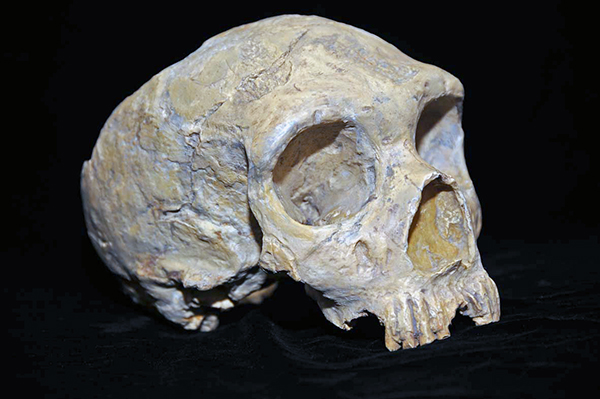The extinct Neanderthals had orbital eye sockets that are much larger than ours. Recently, there has been an discussion covered in a fascinating article linked the other day on the BBC discussing the large orbital eye sockets of the Neanderthals and whether these eye represented a reason for the Neanderthals’ demise or not.
Helga Kolb noticed an interesting discussion about this from two other pioneers of vision research, Bill Stell and Clyde Oyster his resulted in some interesting commentary between them on their Facebook accounts.
Bill Stell made the following comment
Dunbar says. “The size of the retina is determined by the size of the eyeball.”‘ This is true enough, at least if you change “determined” to “limited”; and the size of the eyeball, likewise, is limited BUT NOT DETERMINED by the size of the orbit! Furthermore, the only part of the head that the anthropologists/archeologists can measure today is the bony orbit!!! In the chickens that we study in my lab, the orbit is almost completely filled by the large eyeball; but in a modern Homo sapiens, such as you or me, the eyeball occupies only 20-25% of the total orbital volume (Detorakis ET, et al., Orbit. 2010 29(5): 244-9). In sum: I see no compelling reason to agree with the conclusion drawn by the authors of the study reported by the BBC.
This was followed by Clyde Oyster: Absolute eye size doesn’t tell us anything about the eye’s functional properties. There are some advantages to having large eyes for either high acuity or high sensitivity, but as we know, it’s photoreceptors densities, distributions, and wiring that are the determining factors. As to how our vision might compare to Neanderthal vision, my guess is that they would be similar. After all, our vision is quite similar to other diurnal primates, even those from which the hominid line departed six million or so years ago. Neanderthals were much closer relatives, so the best bet is that their vision was much like ours, as was, probably, vision in australopithecines, like Lucy and her kin.
Bill Stell: “Better vision” depends more on the neural circuitry than on photoreceptor types and distributions, doesn’t it! In most of the human retina, rods are much more abundant and closely packed than cones; but the retinal circuitry associated with these photoreceptors gives the cone SYSTEM higher spatial acuity, and the rod SYSTEM higher sensitivity, nevertheless.
Helga Kolb: It is possible that Neanderthal man had larger eyes than modern man but the retina may not have been specialized for cone, foveal high acuity vision. It may have been a more rod-based high sensitivity system. Large eyes in the animal kingdom are rarely high acuity eyes, think whales and elephants. Look at Donnell Creel’s chapter on “Visual and auditory anomalies associated with albinism” in webvision, where he shows that albino humans have no fovea and consequent poor eyesight. As with albino humans, the phylogenetically older visual system with a greater proportion of crossed neurons in the optic chiasm may have been present in Neanderthal man’s visual system with a consequent poorly developed or absent fovea. But Neanderthal man’s demise was probably not so much to do with poor eyesight as to do with under-developed frontal lobes in the brain.
